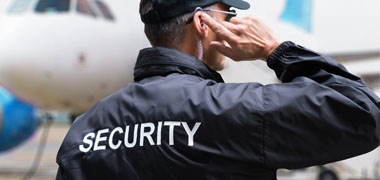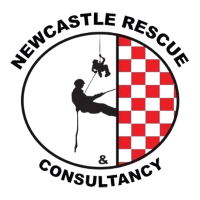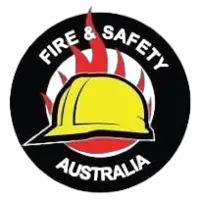
How do I become a Firefighter in Central Coast?
Get qualified to work as a Firefighter with a course recognised across Australia. Speak to a training provider to learn more.
Course providers in Central Coast
The following providers offer Firefighter courses in Central Coast, New South Wales.




















Common questions
In Australia, a full time Firefighter generally earns $1,490 per week ($77,480 annual salary) before tax. This is a median figure for full-time employees and should be considered a guide only. As you gain more experience you can expect a potentially higher salary than people who are new to the industry.
 Courses.com.au Team
Courses.com.au Team
This industry has seen an increase in employment numbers in recent years. There are currently 12,200 people working as a Firefighter in Australia compared to 11,200 five years ago. Firefighters may find work across all regions of Australia.
Source: Australian Government Labour Market Insights
 Courses.com.au Team
Courses.com.au Team
If you’re planning a career as a Firefighter, consider enrolling in a Certificate III in Public Safety (Firefighting and Emergency Operations). This course allows you to specialise in urban fires, wildfires, aviation incidents and isolated structural fires. You’ll also learn about advanced resuscitation, incident scene safety and management, fire suppression techniques and skills for driving operational vehicles. A Certificate II in Public Safety (Firefighting Operations) may also be appropriate.
 Courses.com.au Team
Courses.com.au Team
Related career opportunities
Browse occupations related to Firefighter
Further reading


Careers for people who love the outdoors
14th September 2021
What do social workers do?
11th December 2019All firefighter courses
- HLTAID015 Provide Advanced Resuscitation and Oxygen Therapy
- AHCMOM213 Operate and Maintain Chainsaws
- FWPCOT3326 Recover Four Wheel Drive Vehicle
- SISORSC003 Perform Complex Vertical Rescues
- VU23311 Prepare to Work within the Australasian Inter-service Incident Management System
- PUAFIR306 Identify, Detect and Monitor Hazardous Materials at an Incident
- PUAFIR308 Employ Personal Protection at a Hazardous Materials Incident
- PUAFIR324 Render Hazardous Materials Incidents Safe
- RIIVEH305F Operate and Maintain a Four Wheel Drive Vehicle
- PUAFIR210 Prevent Injury
- FWPCOT2259 & FWPCOT2254 Use and Maintain Chainsaws
- PUAFIR207 Operate Breathing Apparatus Open Circuit
- PUASAR022 Participate in a Rescue Operation
- MSMWHS216 Operate Breathing Apparatus
- FWPCOT3329 Perform Complex Four Wheel Drive Operations
- PUAEQU001 Prepare, Maintain and Test Response Equipment
- PUA30619 Certificate III in Public Safety (Firefighting and Emergency Operations)
- PUAFIR203 Respond to Urban Fire
- PUAOPE019 Control a Level 3 Incident
- 22575VIC Course in Basic Oxygen Administration for First Aid
- PUASAR024 Undertake Road Crash Rescue
- TLIF2018 Operate Firefighting Equipment
- PUA20622 Certificate II in Public Safety (Firefighting and Emergency Operations)
- PUAFIR204 Respond to Wildfire
- 22611VIC Course in Awareness of the Australasian Inter-service Incident Management System (AIIMS)
- RIIERR205D Apply Initial Response First Aid
- MARF044 Prevent, Control and Fight Fires on Board a Vessel (Advanced Firefighting)
- PUA20719 Certificate II in Public Safety (Firefighting Operations)
- PUACOM001 Communicate in the Workplace
- PUASAR001 Perform Land Based Swiftwater and Floodwater Rescue and Recovery
Firefighter careers
The demand for skilled firefighters in the Central Coast area is on the rise, making Firefighter courses in Central Coast an excellent opportunity for those considering a rewarding career in public safety. With 17 beginner courses designed for those with no prior experience, aspiring firefighters can gain essential skills in critical areas. Popular options like Operate and Maintain Chainsaws AHCMOM213 and Operate Breathing Apparatus MSMWHS216 equip learners with practical knowledge and hands-on training necessary for effective firefighting. These certifications are delivered by registered training organisations (RTOs) ensuring quality and recognition in the industry.
In addition to practical skills, the Provide Advanced Resuscitation and Oxygen Therapy HLTAID015 course is vital for any firefighter, as it focuses on life-saving techniques in emergency situations. Moreover, courses such as Undertake Vertical Rescue PUASAR032 and Undertake Road Crash Rescue PUASAR024 prepare students for the various rescue scenarios they may encounter while serving the community. Completing these firefighter courses in the Central Coast empowers individuals to make a tangible difference and develop a sense of pride in their role within the community.
The comprehensive training offered through the firefighter courses in Central Coast will also provide valuable experience for those interested in various related job roles. Interested candidates may explore careers such as a Paramedic or a Law Enforcement Officer, both of which complement the skill set garnered during firefighter training. As trainees learn effective communication and leadership skills through courses like Communicate in the Workplace PUACOM001, they position themselves favourably for these roles that demand teamwork and quick decision-making in high-pressure situations.
Moreover, the synergy between firefighting and other sectors such as government services and public affairs make the Public Safety pathway an appealing option for career advancement. Completing courses like Control a Level 3 Incident PUAOPE019 reflects the versatility and advanced capabilities that employers across various industries seek. Whether pursuing fire and rescue, law enforcement, or emergency management, those who engage with these training opportunities gain competitive skills that serve them throughout their careers.
The commitment to community safety and service that drives firefighters also leads naturally to roles such as a Fire Warden or Chief Warden. The training received in courses such as Prepare, Maintain and Test Response Equipment PUAEQU001 intensifies the expertise required for these positions. Active participation in the firefighter training landscape in Central Coast not only opens the door to rewarding professions but also nurtures a generation of responders capable of excelling in emergencies, effectively safeguarding lives in their local communities.
